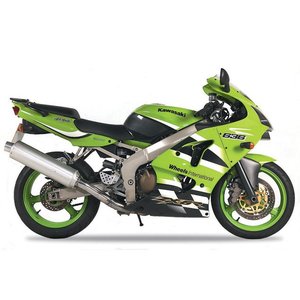Kawasaki ZX-6R Ninja 636 (2005–2006): A Supersport Legend Revisited
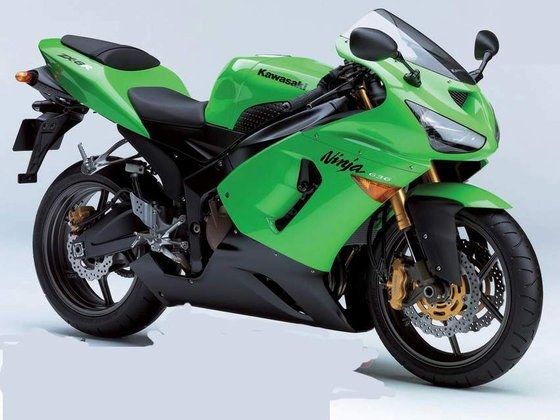
When Kawasaki unleashed the ZX-6R Ninja 636 for the 2005–2006 model years, it wasn’t just another middleweight sportbike—it was a statement. This generation of the Ninja 636 blended track-day aggression with street-riding practicality in a way that still resonates with riders today. Let’s dive into what makes this motorcycle a standout, even decades after its debut.
Design: Aerodynamics Meets Aggression
The Ninja 636’s design screams purpose. From its Ram Air-fed front fairing to the under-seat exhaust, every line serves a function. Kawasaki’s engineers prioritized aerodynamics, creating a fairing that splits airflow cleanly around the rider. The result? Less helmet buffeting at high speeds and a "bubble" of calm air that makes highway riding surprisingly manageable.
The split-seam fuel tank is a masterstroke. By separating the airbox cover from the actual fuel tank, Kawasaki centralized mass near the bike’s core. This sharpens chassis response, making weight transitions feel almost telepathic during aggressive cornering. The under-seat exhaust isn’t just for looks—it tucks mass inward, contributing to the Ninja’s nimble character.
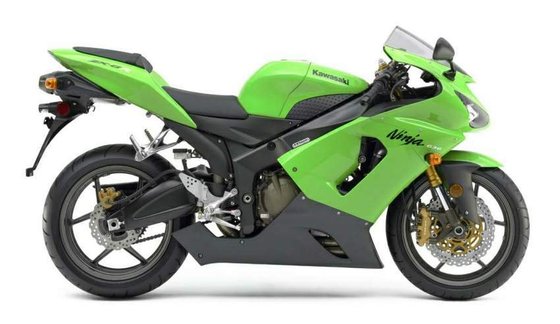
Engine Performance: The 636cc Advantage
The heart of this machine is its 636cc inline-four—a 36cc bump over traditional 600cc rivals. This extra displacement isn’t just marketing fluff. On the road, the engine delivers a visceral mid-range punch that smaller 600s lack. From 3,000 rpm, the twin-injector fuel system and oval-shaped throttle bodies feed the beast, building power linearly until the tachometer kisses 14,000 rpm.
Key highlights: - 130.5 hp (96 kW) at 14,000 rpm with Ram Air - 52 ft-lbs (70.5 Nm) of torque at 11,500 rpm - Slipper clutch for smoother downshifts
Riding the Ninja 636 feels like having two bikes in one. At low revs, it’s docile enough for city traffic, but crack the throttle open, and the howl of the engine transforms it into a track weapon. The dual-injector system ensures buttery throttle response, even in wet conditions—a trait we tested on rain-soaked Spanish mountain roads during its launch.
Handling: Precision Meets Comfort
Kawasaki’s aluminum perimeter frame and GP-style swingarm strike a perfect balance between rigidity and flex. Paired with fully adjustable Showa suspension, the Ninja 636 floats over rough pavement yet stays planted mid-corner. The 41mm inverted forks and Uni-Trak rear shock absorb everything from potholes to track curbs without sacrificing feedback.
Geometry tweaks for 2005–2006: - Shorter wheelbase (55.3 in / 1,405 mm) for quicker turns - 25-degree rake and 4.3 in (109 mm) trail for stability - Six-spoke wheels shod with Bridgestone BT-014 tires (120/65 front, 180/55 rear)
Push it into a hairpin, and the Ninja flicks side-to-side with minimal effort. The riding position—borrowed from the ZX-10R—lets you sit “in” the bike rather than “on” it. The seat’s subtle indentation locks you in during hard acceleration, while the clip-ons are closer than expected, reducing strain on wrists during long rides.
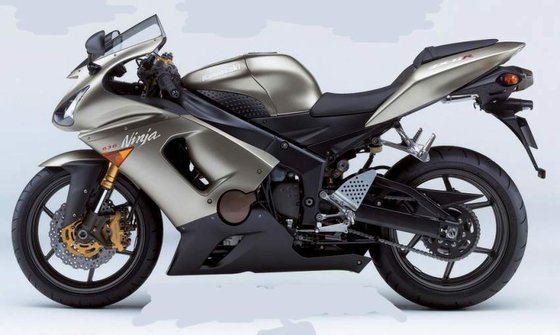
Braking: Radial Mastery
The Ninja 636’s radial-mounted four-piston calipers and 300mm petal discs are a revelation. Two fingers on the lever deliver surgical stopping power, whether scrubbing speed before a corner or navigating stop-and-go traffic. Kawasaki’s direct-action master cylinder amplifies feedback, letting you modulate pressure with confidence. The rear 210mm disc is more than an afterthought—it’s useful for trail braking or tight U-turns.
Ergonomics: A Sportbike You Can Live With
For a supersport, the Ninja 636 is shockingly livable. The seat height (32.3 in / 820 mm) accommodates shorter riders, while the tank’s recessed design allows a deep tuck at speed. Unlike many race-replicas, the bars aren’t wrist-killers—I’ve logged multi-hour rides without discomfort. Kawasaki even left room for customization; adding bar risers or soft luggage could turn this track star into a weekend tourer.
Competition: How the Ninja 636 Stacks Up
The 2005–2006 middleweight class was a golden era. Here’s how the Ninja 636 held its ground:
1. Honda CBR600RR
- Strengths: Sharper handling, higher-revving engine.
- Weaknesses: Less mid-range grunt; the Ninja’s 636cc advantage shines here.
- Verdict: The Honda is a track specialist, but the Kawasaki rules the streets.
2. Yamaha YZF-R6
- Strengths: Razor-sharp steering, screaming top-end.
- Weaknesses: Anemic below 10,000 rpm; the Ninja’s low-end torque dominates.
- Verdict: Choose the R6 for the track, the Ninja for real-world riding.
3. Suzuki GSX-R750
- Strengths: Bigger engine (750cc), brute-force power.
- Weaknesses: Heavier (407 lbs wet) and pricier.
- Verdict: The GSX-R is a powerhouse, but the Ninja’s agility wins twisty roads.
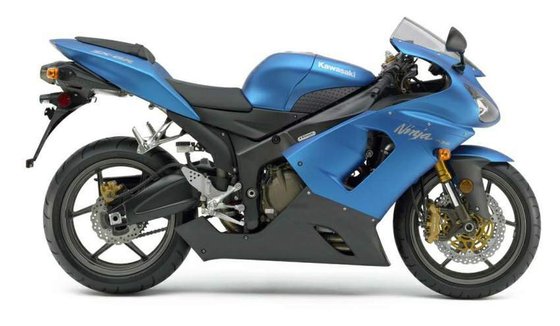
Maintenance: Keeping the Ninja 636 Thriving
Owning a Ninja 636 isn’t just about riding—it’s about preserving a legend. Here’s what to prioritize:
1. Valve Inspections
- Check valve clearances every 15,000 km (9,300 mi). Specs:
- Intake: 0.11–0.19 mm (0.004–0.007 in)
- Exhaust: 0.22–0.31 mm (0.008–0.012 in)
2. Oil & Filter
- Use 10W-60 synthetic (3.6L with filter). Upgrade to a high-flow oil filter for track days.
3. Chain & Sprockets
- Stock gearing (15T front/43T rear) works, but a -1/+2 setup sharpens acceleration. Pair with an X-ring chain for longevity.
4. Brake Fluid
- Flush with DOT 4 annually. Consider steel-braided lines for firmer lever feel.
5. Cooling System
- Replace coolant every 2 years (2.6L capacity). Monitor temps—the taller radiator runs cool even in traffic.
MOTOPARTS.store Upgrades:
- Exhaust: Swap the stock muffler for a lightweight slip-on (we recommend stainless steel headers for track use).
- Tires: Bridgestone Battlax Hypersport S22 for street; Pirelli Diablo Supercorsa SP for track.
- Suspension: Re-valve the Showa forks with linear springs for heavier riders.
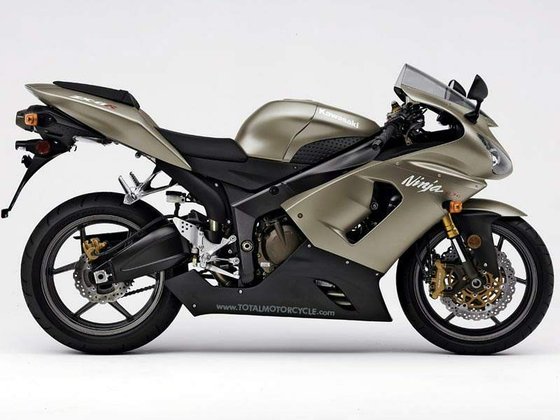
Conclusion: Timeless Thrills
The 2005–2006 Kawasaki Ninja 636 isn’t just a relic—it’s a benchmark. Its 636cc engine bridges the gap between 600cc precision and liter-bike brawn, while the chassis balances aggression with everyday usability. Whether you’re carving canyons or chasing lap times, this Ninja delivers a raw, mechanical connection that modern electronics can’t replicate.
For owners, MOTOPARTS.store offers everything from OEM replacements to race-ready upgrades. Because even legends deserve a second wind.


Specifications sheet
| Engine | |
|---|---|
| Stroke: | Four-stroke |
| Max power: | 96 kW | 129.0 hp |
| Max torque: | 70 Nm |
| Fuel system: | 4x 38 mm Keihin twin injectors with secondary airbox injectors |
| Lubrication: | Wet sump |
| Max power @: | 14000 rpm |
| Displacement: | 636 ccm |
| Max torque @: | 11500 rpm |
| Configuration: | Inline |
| Cooling system: | Liquid-cooled |
| Compression ratio: | 13.9:1 |
| Number of cylinders: | 4 |
| Dimensions | |
|---|---|
| Wheelbase: | 1405 mm (55.3 in) |
| Dry weight: | 164 |
| Wet weight: | 185 |
| Seat height: | 820 mm (32.3 in) |
| Overall width: | 715 mm (28.1 in) |
| Overall height: | 1110 mm (43.7 in) |
| Overall length: | 2105 mm (82.9 in) |
| Fuel tank capacity: | 17 L (4.5 US gal) |
| Drivetrain | |
|---|---|
| Final drive: | chain |
| Chain length: | 110 |
| Transmission: | 6-speed, wet multi-disc clutch with back-torque limiter |
| Rear sprocket: | 43 |
| Front sprocket: | 15 |
| Maintenance | |
|---|---|
| Rear tire: | 180/55 z-17 |
| Engine oil: | 10W40 |
| Front tire: | 120/65 z-17 |
| Idle speed: | 1300 ± 50 rpm |
| Brake fluid: | DOT 4 |
| Spark plugs: | NGK CR9E or NGK CR9EIX |
| Spark plug gap: | 0.8 |
| Coolant capacity: | 2.6 |
| Forks oil capacity: | 0.72 |
| Engine oil capacity: | 3.6 |
| Engine oil change interval: | Every 5000 km or 2 years (whichever comes first) |
| Valve clearance (intake, cold): | 0.11–0.19 mm |
| Valve clearance check interval: | 24,000 km (15,000 mi) |
| Valve clearance (exhaust, cold): | 0.22–0.31 mm |
| Recommended tire pressure (rear): | 2.9 bar (42 psi) |
| Recommended tire pressure (front): | 2.5 bar (36 psi) |
| Additional Notes | |
|---|---|
| Features: | Under-seat exhaust with catalytic converter, aerodynamic Ram Air intake, lap timer, adjustable shift indicator |
| Stock tires: | Bridgestone BT014 (front and rear) |
| Chassis and Suspension | |
|---|---|
| Frame: | Perimeter pressed-aluminium |
| Rear brakes: | Single 210 mm petal disc, 1-piston caliper |
| Front brakes: | 2 x 300 mm petal discs, radial-mount 4-piston calipers |
| Rear suspension: | Bottom-Link Uni-Trak® gas-charged shock, adjustable preload, dual-range compression, and 25-way rebound damping |
| Front suspension: | 41 mm inverted Showa cartridge fork, fully adjustable (preload, compression, rebound) |
| Rear wheel travel: | 133 mm (5.2 in) |
| Front wheel travel: | 120 mm (4.7 in) |



